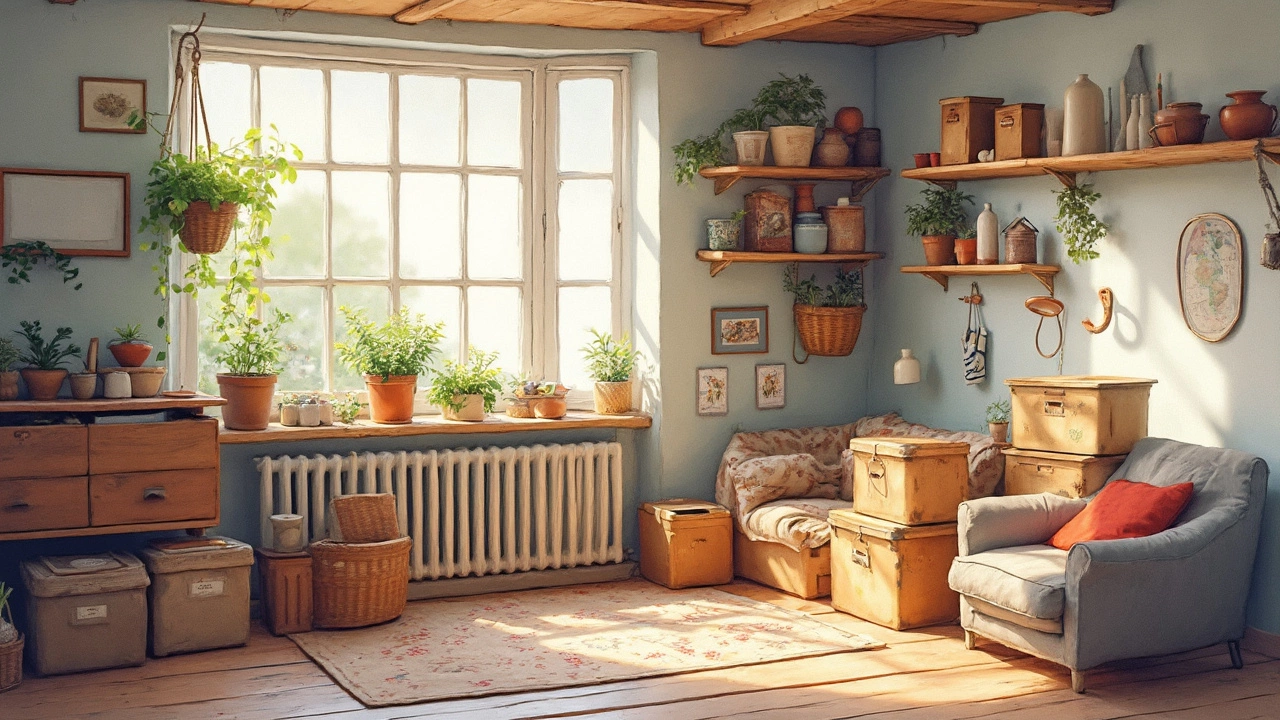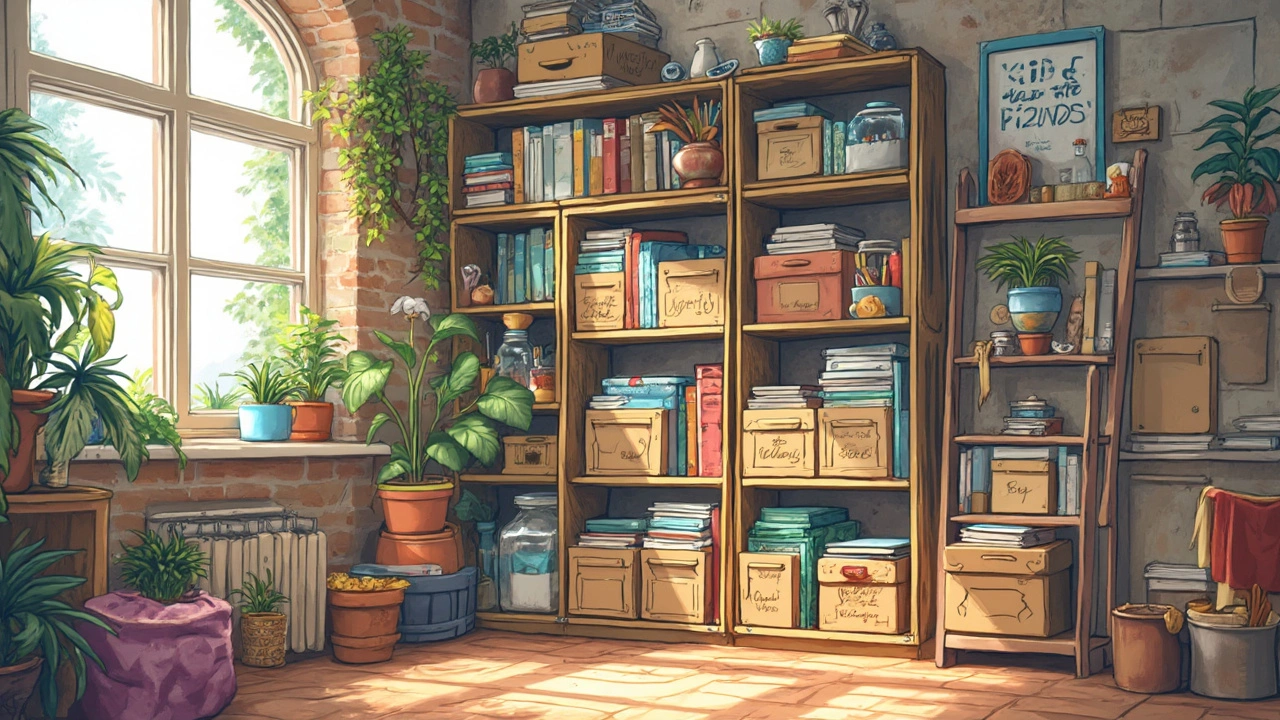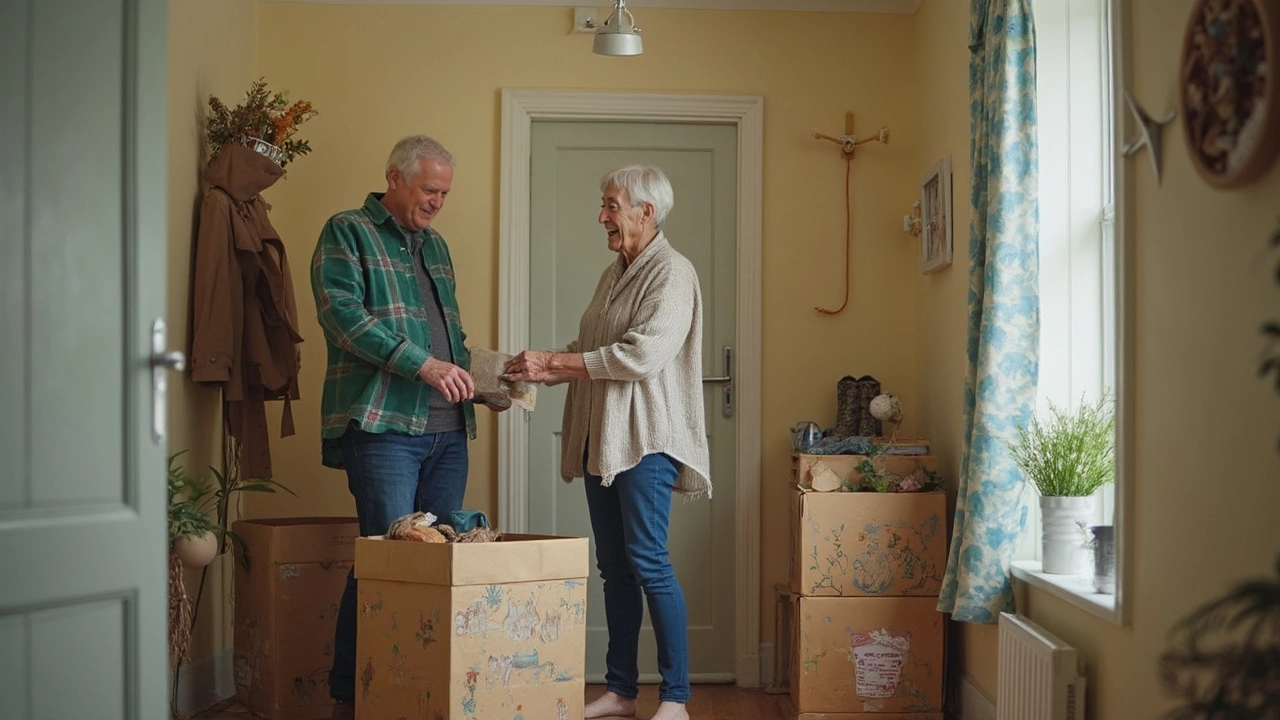Storage on a Budget: Simple Tricks That Really Work

Why shell out big bucks for storage when you can get organized with what you already have? Most people don’t realize they’re probably sitting on dozens of hidden storage solutions right at home. Think about all those empty jars, old bins, and shoe boxes stacked in your closets. With a little creativity, these “throwaways” are your ticket to a clutter-free space.
Expensive organizers aren't always better. In fact, a local survey last year showed that most folks who invested in pricey storage bins regretted it—they ended up forgetting what they bought, and the clutter came right back. What actually works? Using simple, cheap solutions and routines you can stick with. You probably don’t need a fancy label maker or a designer closet system. You need ideas that actually work in the real world—and fit in your real budget.
- Repurposing Everyday Items
- Smart Shopping on a Budget
- DIY Hacks for Custom Storage
- Maximizing Small Spaces
- Staying Organized Long-Term
Repurposing Everyday Items
If you’re looking to save money on storage, start by seeing your trash as treasure. Why toss perfectly good containers, boxes, or even coffee cans? People across the U.S. spend over $12 billion a year on storage products, but a lot of what’s sold in stores can be replaced with stuff you’ve already got.
Let’s talk glass jars. Don’t throw them out. Instead, wash out spaghetti sauce jars, peanut butter tubs, or salsa containers and use them to store hardware, craft supplies, or dry food. Plastic containers from takeout meals are perfect for desk drawers, bathroom shelves, or even sock organizers. Even those cardboard shoeboxes are gold—just cover them with leftover wrapping paper or fabric, and you’ve got instant shelf bins.
- Tin cans: Remove labels and stack them to organize pencils, art brushes, or kitchen utensils.
- Egg cartons: Great for sorting jewelry, screws, or tiny office supplies—each compartment keeps things sorted.
- Baskets from gift sets: Repurpose these in pantries, closets, or entryways for sorting gloves, snacks, or keys.
- Empty tissue boxes: Use them as plastic bag dispensers—just stuff bags inside and pull them out one at a time.
Check out this quick data snapshot on how folks in the U.S. already use repurposed household items for storage:
| Item Repurposed | Common New Use | Estimated Cost Saved/Year |
|---|---|---|
| Glass Jars | Pantry & small hardware | $40 |
| Shoeboxes | Closet shelf bins | $35 |
| Tin Cans | Utensil holders | $25 |
| Gift Baskets | Pantry organizing | $30 |
It’s way more satisfying to find a use for something instead of tossing it. Not only do you save cash, but you also cut down on waste. Next time you’re about to throw out a sturdy container, ask yourself: Would this fit on a shelf, in a drawer, or maybe help sort the junk drawer? You’ll be surprised at how easy it is to create extra storage without spending a dime.
Smart Shopping on a Budget
Scoring good storage doesn’t mean spending big at fancy organizing stores. You can grab bargains if you know where to look and what to avoid. Thrift stores, dollar shops, and even hardware stores have loads of affordable stuff that works just as well as the expensive brands.
Thrift stores are goldmines for baskets, jars, and wooden boxes. I once picked up a pile of wire baskets for less than four bucks each. And here’s a quick fact: According to Goodwill’s 2024 annual report, small storage items sell for an average of $2.35 per piece. That’s way cheaper than new bins at big box stores, where the average is $9.99.
If you’re shopping new, watch for sales. Big retailers tend to slash prices on storage bins in August and January, since that’s when people reset their homes—back-to-school and New Year’s. Signing up for price alerts online or using cashback apps can also save you an extra 5–10%.
Repurposing stuff is key. Instead of springing for drawer organizers, grab a cutlery tray from the dollar store or use old shoe boxes to separate things. You don’t need to buy "storage-specific" solutions—if it fits and it holds something, it counts.
Here’s a quick breakdown of what you can expect to save depending on where you shop:
| Store Type | Average Cost per Storage Item |
|---|---|
| Thrift Store | $2–$4 |
| Dollar Store | $1–$3 |
| Big Box Retailer | $6–$12 |
| Online Marketplaces | $3–$8 |
If you’re in a tight spot, swap or borrow organizers with friends. There are local buy-nothing groups online where people give away unused bins or baskets. Why pay for new? When it comes to storage, being resourceful pays off way more than blowing your budget on the latest container trend.

DIY Hacks for Custom Storage
Custom storage sounds expensive, but it’s way easier—and cheaper—than you’d think when you do it yourself. The truth is, some of the best storage hacks use stuff you already have or can grab for just a couple bucks at the hardware store.
Got old wooden crates or wine boxes? Stack them on their sides, screw them together, and bam, instant shelves for books or shoes. Cardboard magazine holders from the dollar store do double-duty as pantry organizers for canned goods. Even empty tissue boxes can become sock or t-shirt dividers in drawers. It’s wild how many things can serve a second life if you see them in a new way.
Here’s a quick list to get you started with storage projects without breaking the bank:
- Wall hooks from spoons: Bend old metal spoons and screw them onto a plank for a fun hook rack in the entryway.
- PVC pipe shoe rack: Cut wide PVC pipes into 10-inch sections, stack them, and glue together for a custom shoe cubby.
- Under-bed bins from plastic totes: Add wheels to low plastic bins for pull-out storage under the bed—way cheaper than fancy under-bed drawers.
- Hanging baskets in the kitchen: Use cheap metal file organizers or bike baskets screwed to the wall for onions, potatoes, or fruit.
- Magnetic spice jars: Glue magnets to small jars and stick them to your fridge to free up cabinet space.
It’s also worth looking at the numbers. A quick comparison of costs between DIY and store-bought options is pretty eye-opening:
| Storage Solution | DIY Cost | Store-Bought Cost |
|---|---|---|
| PVC Shoe Rack | $10-$15 | $40-$60 |
| Wall Hook Rack | $5 | $25-$40 |
| Under-Bed Bin | $8-$12 | $25+ |
All these hacks do the same job and usually look just as good once you set them up. Plus, you get the extra bonus of putting your own personality into them. Next time you eye a pile of clutter, try one of these homemade fixes. You’ll get more space for less cash—and probably have some fun building it too.
Maximizing Small Spaces
Dealing with cramped quarters? It’s actually easier than you think to get the most out of every inch. The trick is all about thinking vertical and using the walls, doors, and even ceilings. Did you know that wall-mounted shelves can hold way more than traditional bookcases? Plus, it keeps your floor clear, which makes your place feel bigger, not just look neater.
One of the fastest fixes is using the back of doors. Hang racks or even simple hooks for bags, belts, or cleaning supplies. Most renters love this because it doesn’t leave permanent marks, but it instantly adds extra storage without taking up square footage.
- Try under-bed storage bins for seasonal clothes or shoes. If your bed’s too low, bed risers cost just a few bucks and add inches of storage space.
- Corner shelves turn wasted spots into useful storage. Even a small floating shelf in the bathroom or entryway can hold more than you’d expect—think toiletries, keys, or hand towels.
- Think stackable solutions. Plastic crates or stackable bins can be a game-changer in closets, kitchens, or even under sinks, letting you use the whole height of the space.
Mirrors and good lighting also help a small room feel less cramped, but at the end of the day, it’s all about smart storage. Tiny apartments and small homes can get just as organized as anywhere else—sometimes you just need to see the space with fresh eyes. Challenge yourself to use every unused inch.

Staying Organized Long-Term
Getting organized is one thing, but keeping it that way is where most people hit a wall. Honestly, long-term organization isn’t about buying more stuff; it’s all about small habits and routines you can actually keep up. For example, the National Association of Productivity and Organizing Professionals (NAPO) found that almost 60% of folks who did a quick stash-and-hide clean-up ended up with a messy place again in a few weeks. Sound familiar?
The real trick is making it easier to stay tidy than to get messy. Here’s what actually works for regular people:
- Set a timer for 10 minutes once a week—do a quick sweep to put things back where they belong. No excuses, just do it.
- Follow the “one in, one out” rule. If you get something new, something old has to go. This stops clutter from creeping back in.
- Label bins and baskets in plain English. Don’t get fancy—just make sure anyone in the house can see where stuff goes.
- Keep donation boxes handy. Every month or so, toss in what you’re not using. Someone else could use it, and you keep your space clear.
- Don’t let “out of sight” mean “out of mind.” Check the backs of closets and under the bed every season. You’ll spot forgotten clutter before it gets out of hand.
Check out this quick breakdown of what works for folks who keep their homes organized compared to those who struggle:
| Strategy | Organized Homes (%) | Disorganized Homes (%) |
|---|---|---|
| Weekly Tidy-Up | 76 | 29 |
| One In, One Out | 62 | 17 |
| Labeled Storage | 54 | 11 |
Bottom line: Long-term success is about simple habits. You don’t need fancy systems—just a few minutes, the storage you already have, and a plan that sticks.